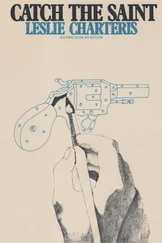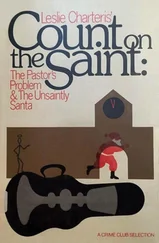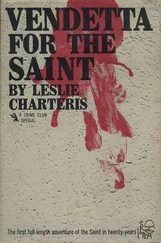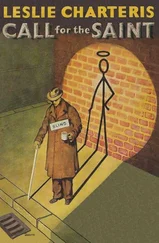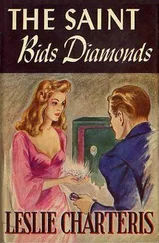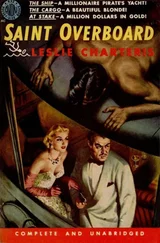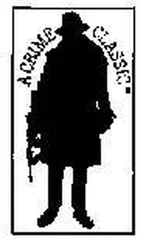After that, Gascott had spent a few years in the far east, and the records made it clear that nobody knew what he had done during the war or when exactly he had re-entered Britain. But Simon remembered how a big Hatton Garden robbery had hit the news three years ago, and how the grapevine in those days had named Gascott as masterminding it.
And if Gascott hadn’t had the sheer bad luck to be picked on for a random customs search at Dover, he would have got clean away with the £50,000-worth of diamonds they found on him. That was a quarter of the Hatton Garden haul, and he steadfastly refused to say what had happened to the rest.
He was sent down for ten years: the robbery, as the judge remarked, had been one of the most brutal and bloody as well as one of the most lucrative of recent years. But they never got Gascott as far as the prison gates. Somehow, almost miraculously, he escaped from the Black Maria in which they were taking him there; and this time he did get out of the country. No one knew how much of the remaining boodle he took with him.
Rockham would certainly approve of Comrade Gascott, the Saint felt sure of that. Except maybe for the one flaw which rather marred the glory of his escape.
He had been recaptured.
That few of Scotland Yard’s representatives are over-gifted with imagination is a fact which this dutiful chronicler has sometimes been obliged to record, however painful it may have been to himself. However, what they may lack in vision they amply make up for in doggedness; and recently their low-key but persistent search for Gascott had paid off. They had found him in Rio de Janeiro: he had been extradited, and now he was somewhere on the Atlantic Ocean, on his way back. He was sharing a cabin with three of the said dogged representatives, and it is a matter of record that they were watching him very closely indeed.
His arrival at Tilbury, a week after Pelton’s meeting with the Saint, brought a predictable splash of front-page newspaper coverage, including photographs of the man who was on his way to Brixton to serve the sentence he should have begun three years before. But for some reason the mug-shots which the authorities saw fit to release were of a photographic quality rivalling the results of Aunt Mabel’s efforts with a box camera on a misty evening.
Pelton had quietly gone aboard with the pilot; and when Gascott disembarked three hours later any direct contact with the aggrieved gentlemen of the press was precluded by his posture and his condition, which were respectively horizontal and delirious.
The fuzzy photographs were of Simon Templar, complete with new hairstyle and hastily grown moustache; and the fuzziness was a necessary precaution against the potential puzzled squawking of any of Gascott’s friends, relatives, or victims who might have detected the substitution — or for that matter of any zealous newspaperman or policeman who wasn’t privy to Pelton’s plan.
The reports accompanying the fuzzy photos gave lurid details of his exploits and ascribed his horizontally and delirium to a violent bout of malaria, a recurring legacy of his time in Malaya. Accordingly, the reports continued, he would not be going straight to Brixton but would be “kept under observation” for a few days in another prison hospital.
Actually he was taken to one of Pelton’s “safe houses”, and Simon Templar was taken there too.
“There’s more than a remote chance,” Pelton dryly pointed out, “that once you get into The Squad — assuming you do — you’ll meet someone who’s known Gascott, at some time. If your cover’s going to stand up to that kind of test, you’ll need to be equipped to give a pretty convincing impersonation.”
And the Saint knew that Pelton was right. It didn’t have to be perfect — anyone Simon was likely to run into who had known Gascott before would probably not have seen him for several years — but it had to be pretty good.
That was why he met the real George Gascott and spent three days almost constantly in his company. They talked about anything that might help him to get an insight into Gascott’s character; which meant that they talked about almost anything under the sun, but in particular about his military experience and his shadier contacts. And all the time throughout those three days, Simon was also studying, consciously and osmotically, Gascott’s distinctive voice and smoothly arrogant manner.
He couldn’t find much to like in Gascott. There was just one saving grace as far as the Saint was concerned: Gascott was not without humour; and at times, when just for a while the sadistic edge was missing, it was a humour something like the Saint’s own. For which he was grateful, because it would make the part just that bit less onerous to keep up.
In the three days he got everything he usefully could have got out of personal contact; and then there was no need to extend that contact any longer. He took his leave of Gascott with considerable relief, and went away with a sheaf of notes which promised to keep him well occupied in his prison cell.
When he entered that cell for the first time, on the following day, the real George Gascott remained in relatively comfortable lodgings at the safe house, well guarded but consoled by the promise that in return for his cooperation, when he was eventually transferred to an ordinary prison, his very first application for parole would be granted.
It had been no sweat for Pelton, talking Gascott into it. Once he had got over an understandable initial suspicion, Gascott had agreed at once. It meant that his aborted escape would not be held against him, and complete freedom would be brought very close; and in return all he had to do was agree to the loan of his identity for an undisclosed purpose. That was the bargain. And Gascott was more than content with it.
Simon Templar, on the other hand, was soon feeling every bit as restless and discontented as he had known he would. Prison life did not agree with him. He hated the routine, he hated the meals, and most of all he hated being cooped up.
True, he was rather a special prisoner. The needs of his mission dictated a semi-solitary confinement. Though he ate with the others, he took his exercise sessions alone in the concrete prison quadrangle — or alone except for the four armed warders — and was otherwise kept very much to his small single cell. Gascott’s record, fortunately, made these arrangements seem plausible enough to avoid raising suspicion among any of the fellow inmates.
The move of the supposed “Gascott” to Brixton from the unnamed hospital where he had recovered from his bout of malaria had not gone unreported; and even though at that period no system of morning deliveries of the newspapers to those detained at His Majesty’s pleasure had yet been implemented, still the word sped around, and there was scarcely a man in the prison on the day after his arrival who didn’t know that the tall newcomer with something of the look of a pirate or gypsy about him was George Gascott.
Only he wasn’t.
Simon Templar had to admit that the physical discomfort he was enduring in Gascott’s stead was less than extreme. The food was an affront to his educated palate, but doubtless it supplied an adequate minimum of sustenance and was a whole lot better than bread-and-water rations would have been. And the cell was hardly a dank dark dungeon reminiscent of the Bastille; it was a light painted room, simple and functional, with a narrow bed, a table, and a chair — all solidly made and bolted firmly to the floor. And there was a washbasin, with cold water. The conditions were plain and spartan rather than punitive in themselves.
But the loss of liberty: that was real enough to the Saint, and there were times when he paced back and forth in his cell like a caged panther, and times when he found himself gazing up through the high barred window for long minutes at the rectangular patch of sky beyond, now blue, now grey, now star-scattered. And then he thought of the men in prisons the world over, the generations of the incarcerated, many of them with little or no prospect of ever being released, for whom that tantalising rectangle of barred sky must have stood as the ever-present symbol of both despair and hope through seemingly interminable years. Educationally, it was quite an experience.
Читать дальше

